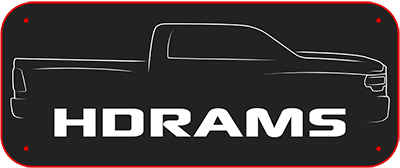It doesn’t sound like your truck has an issue. Everything you mentioned seems like it’s reasonably correct. It’s been my experience that the active regeneration cycle at low speed stop & go isn’t as effective. The fluctuations in throttle, speed, and exhaust flow create too much instability for a really good clean out. The cycle will still bring down soot load (which is important) but it doesn’t work as well as when the truck is at highway speed for the whole duration. It’s almost inevitable that, if you have a soot load based regen cycle in stop and go, your soot load will return rather quickly after it has completed. I’ve found that, if you’re able to operate the truck in a manner that keeps the soot load at 0% regularly, when you do accumulate some, it’s very easy to get it to passively regenerate out. Conversely, once that first 12-13% gets established in there, it takes considerably longer for passive regeneration to work it out.
As far as issues are concerned, the frequent regeneration is definitely concerning. It’s pretty hard to get their arms around this issue when there are so many different reasons why a truck will have the problem. One of the main issues (I believe) is the overall change in the DOC / DPF from the 2013-2018 trucks to the current generation. The overall system was changed in order to meet tighter regulations. The older systems were much higher flowing. This means they regenerated much easier. The newer ones are much tighter in terms of what they capture and how they flow, leading to faster soot loading and more regeneration cycles being necessary if the truck isn’t being operated in a manner consistent with the parameters necessary for passive regeneration.
As much as I would love to see the system setup to be more efficient, I’m not sure that’s possible. The more research and studying I do, the more apt I am to believe that this is simply one of those “you can’t have your cake and eat it too” scenarios. A lot of the struggles we’re experiencing are solvable, while others are not. These are the same pains that the commercial truck industry had to deal with for years, especially in situations where the trucks are not used in line haul, but local delivery. It’s also the main reason why the majority of ambulance manufacturers have resorted back to gasoline power for their units.
These trucks simply are not able to be used in the manner we have used them before in the past. That ability to leisurely drive the truck and use it as a daily conveyance has been mandated and regulated down by ever-narrowing emissions regulations. You can still daily them, but you have to augment your drive cycle routine with more highway or loaded operation. There’s really no way to make (tune) the truck so that it can be driven in a low speed application regularly, and then also perform as needed when towing. If that was truly possible, it would already be done. All three manufacturers are having the same issues when it comes to emissions, and all three are fully aware that a large percentage of their buyers do not use the truck in a working capacity 100% of the time. If it was possible to for them to give you your cake and let you eat it, it would already be done. It simply isn’t possible.
Now, that being the case, we owners can indeed still “make it work”. We just have to change how we operate. If that’s not an option, or the individual is unwilling, there’s only two outcomes: deal with constant emissions related issues, or purchase a gas powered truck.
Trust me when I say that’s not the ultimatum I want for anyone in this community. However, that is indeed where we all are.
